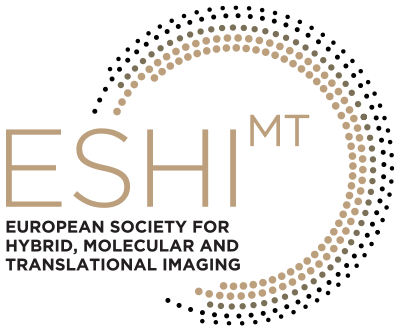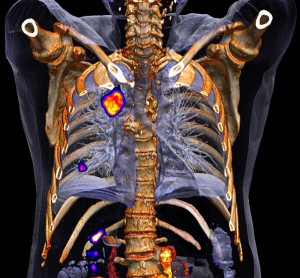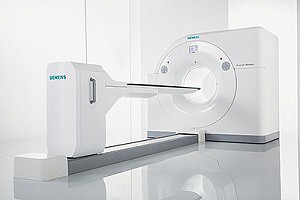Hybrid imaging was much in the news during recent major annual radiology events, such as RSNA and ECR. MedicalExpo talked with Dr. Katrine Åhlström Riklund about new trends in this promising technology. Dr. Riklund is professor of radiology and nuclear medicine at University Hospital of Umeå in Sweden and she is currently president of ESHI and of the European Congress of Radiology 2016.
Source: emag.medicalexpo.com
MedicalExpo e-magazine: Could you give us your definition of hybrid imaging?
Dr. Katrine Riklund: Hybrid imaging is imaging with a machine that is composed of two different modalities. You can find the PET/CT, the PET/MRI and the SPECT/CT. It means that we will have examinations giving us both the structural information from the CT or MRI part, as well as the functional or molecular information from the PET part.
The most common in clinical work is the PET/CT or the SPECT/CT. The PET/CT is used a lot in oncologic imaging for lung cancer, melanoma, lymphoma, colorectal cancer, brain cancer, and more. The PET/MRI is a newer technique which is today mostly used in research. For the PET/MRI, there is still a limited amount of equipment available, maybe around a hundred pieces of equipment in the world at the most, compared to thousands of pieces of equipment available for the PET/CT. The first commercial PET/CT scanner was available on the market at the beginning of 2001. The PET/MRI was first available on the market in 2010.
ME e-magazine: Is hybrid imaging more efficient than conventional methods?
Dr. Riklund: Yes, in some ways but it is not a first-line examination like conventional CT or MRI. It is not an emergency examination either. It is mostly used in oncology to stage the patient; it is for treatment evaluation or surveillance of a few diagnoses which have a very high risk of presenting with metastasis. But still, the usefulness of hybrid imaging for a lot of cancers or oncologic diagnosis is increasing quite rapidly as well as in neurocardiac diseases.
For several diagnoses, it has been shown that by using the PET – as well as the most common tracer that is FDG, Fludeoxyglucose -, you can stage the cancers with high accuracy.
It has also been shown that with the PET/CT you can see the difference between healthy lymph nodes and lymph nodes with cancer cells inside, even if the size is normal. Not all the large lymph nodes contain malignant cells. By using the PET part in combination with CT you can make an examination with higher accuracy, which means that you can make a safer staging or treatment evaluation and diagnosis.
ME e-magazine: Is the patient exposed to more radiation with hybrid imaging?
Dr. Riklund: Yes, but by doing a diagnostic CT most of the radiation is from the CT examination. Overall, you need to evaluate if it’s worth it, the net medical benefit, if you really need information in order to choose the correct treatment, to know the correct staging and the potential need for surgery.
ME e-magazine: What are the latest trends in hybrid imaging?
Dr. Riklund: There are new tracers coming up, such as PSMA for prostate cancer, Ga-DOTATOC for neuroendocrine tumors and others. They are still in clinical trial, but in some hospitals they have started to use them in their clinical routine.
Also, as in many other scientific areas, the use of big data to create combination data from imaging, blood samples, biopsies and more is increasing a lot. Another trend in imaging in general is to better learn from a computer-based system for extracting interesting data from image data.
And for hybrid imaging, I hope that we will see a transition from research to clinical use for the PET/MRI system. Due to its cost, it will probably be in limited use.
ME e-magazine: At ECR 2016, you launched the European Society for Hybrid Medical Imaging. What is its purpose?
Dr. Riklund: Today hybrid imaging is composed of two different techniques. So far, CT and MRI are mostly in the hands of the radiologist, while PET is in the hands of the nuclear medicine physician. The aim is that in the future this examination could be read by only one specialist.
I am myself a “hybrid”—I am both a radiologist and a nuclear medicine physician. In my nuclear medicine department, all my physicians are double-licensed which means that they can read both the CT and the PET parts. We have a very good collaboration with the CT department so that the patients can go to only one examination.
The purpose is also to increase access to training for radiologists and other physicians with the aim that in the future imaging specialists will be able to read, understand and make protocol for hybrid examinations. But it will take time.


